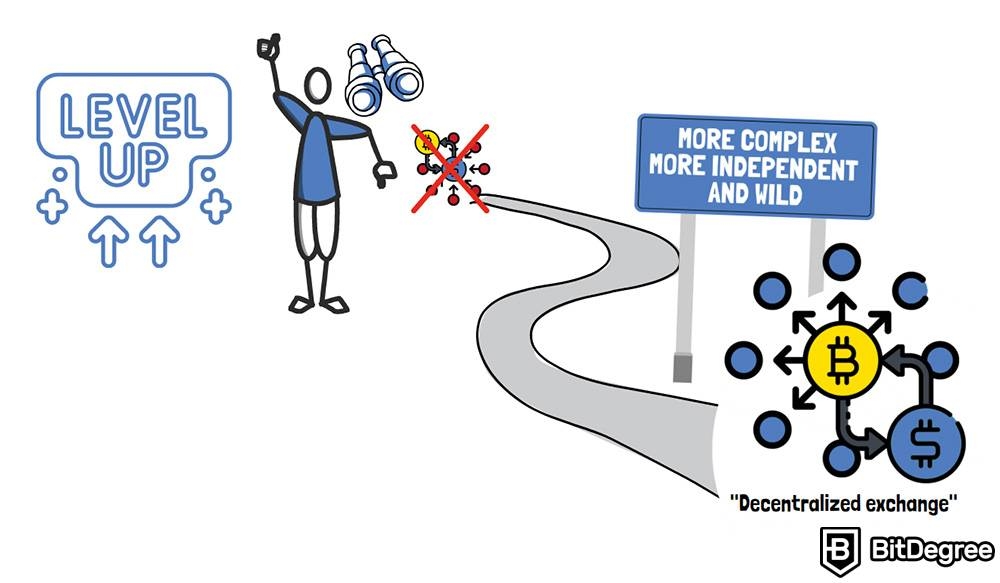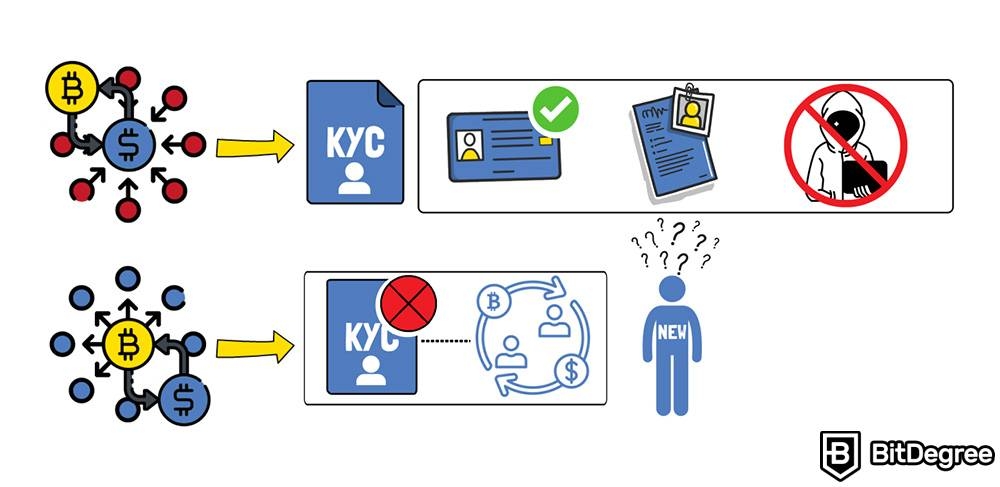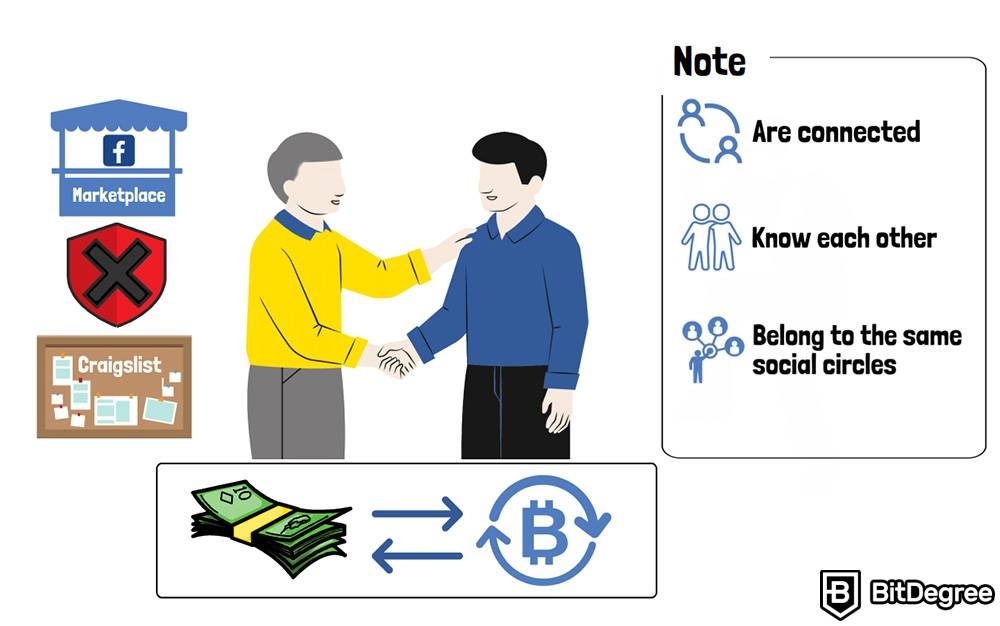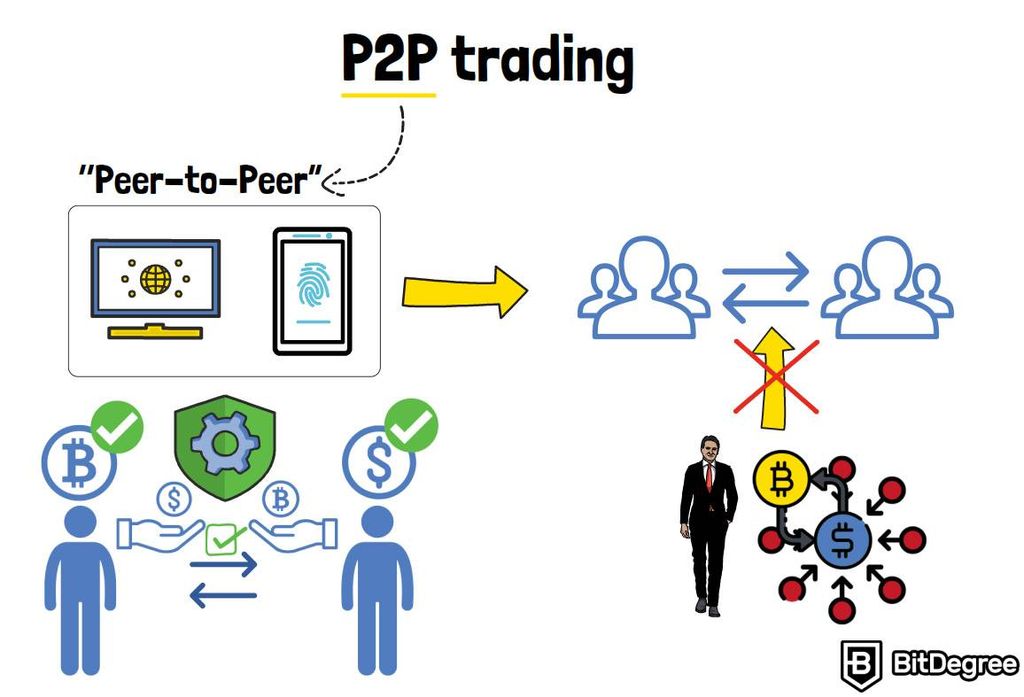7.1 Where Can You Trade Cryptocurrencies?
Stop overpaying - start transferring money with Ogvio. Sign up, invite friends & grab Rewards now! 🎁
In this section, you're going to find out where to trade cryptocurrencies!
Trading cryptocurrencies sounds simple. Everyone’s talking about it, which makes you think that anyone could do it! And that’s true. But for a beginner, it’s easy to get lost, real quick. In some of the previous sections of this Crypto 101 Handbook, you can find explanations of what cryptocurrencies are. Understanding them and actually knowing where to trade crypto, however, are two very different things.
The difference between places where you can trade crypto is a source for a heated debate. After getting to know every one of them, you’ll see what I mean. And, believe me - the last one will make you raise some eyebrows!
In this section, I’ll cover where to trade cryptocurrencies, how to do so, what are the advantages and disadvantages of different types of platforms, and what is the best choice for beginners.
Let’s dive into it!

Video Explainer
Video Explainer: Where Can You Trade Cryptocurrencies?
Reading is not your thing? Watch the "Where Can You Trade Cryptocurrencies?" video explainer
Where to Trade Crypto: 3 Best Approaches Explained (Animated)


What’s So Special About Trading Cryptocurrencies?
Crypto trading refers to the buying and selling of virtual or digital assets. As you know by now, these are usually coins or tokens, such as Bitcoin, Ethereum, Litecoin, and others. In most cases, the aim of crypto trading is to make a profit from price fluctuations.
Many best crypto trading platforms that provide their clients with the ability to get together and trade their crypto assets seek profits, as well. It’s a service, after all! Companies that offer such services are called centralized exchanges, otherwise known as CEXs. Let’s start with them.
Centralized Exchanges (CEX)
In addition to the best platform to trade crypto, cryptocurrency trading requires knowledge, intuition, and understanding of such factors as market demand, regulatory developments, technological advancements, and so on.
This goes without even mentioning the technical part of setting up all that’s necessary to actually be able to buy, sell, and trade crypto. It can get complicated! That’s where CEXs come in. They make life easier, especially for beginners, since they provide a simple answer to the question - where to trade crypto?

It’s the most user-friendly and intuitive way of trading crypto assets. Here’s a way to look at it.
Think of a centralized exchange as a supermarket, but for crypto. Just like in a regular supermarket, a CEX is a place where users can buy and sell cryptocurrencies using not only other cryptos, but traditional, fiat money as well.
If you’re new to crypto and don’t have any cryptocurrencies yet, how else can you acquire crypto if not paying for it with dollars, euros, and other fiat currencies, on a crypto trading platform? That’s why most crypto journeys begin on centralized exchanges.
Centralized exchanges are ‘centralized’ because they operate under a set authority that builds, develops, and maintains the platform in question. This means that the exchange holds control over funds and manages transactions, as well as controls the assets of their users, matches buyers and sellers, and facilitates trades. In other words - makes things less complicated for the trader.
Users don’t have to worry about making sure that a particular crypto asset that they’re after is actually available, just like they don’t have to actively look for a buyer or a seller of the asset they want to obtain. The CEX organizes all of this for them.
That’s a service. And by doing so, the company makes a profit. The platform applies a transaction fee to every trade that takes place on it.
Among the best crypto trading platforms are such CEXs as Binance, Kraken, Coinbase, and others. As time went by, these companies expanded the list of services they provide, so they could stay relevant and stand out from the crowd of competitors, providing their clients not only with a place where to trade crypto, but with a variety of additional features, as well.

In order to become more accessible for newcomers, CEXs have made sure they have a user-friendly interface, easy-to-follow instructions and tutorials, as well as various payment options.
They apply the so-called KYC procedures. “KYC” stands for “Know Your Customer”. It’s a measure employed to make sure people use their real identities to reduce the risk of fraudulent behavior. So, after you create an account and get verified, you can literally go and buy $20 worth of Bitcoin in a matter of minutes. It’s that easy!
Besides that, CEXs have more safety guarantees for inexperienced users. These include more robust security measures, insurance for user funds, and, often, support teams that can assist with any issues that may arise.
So, basically, CEXs are intuitive, user-friendly, and reduce the chances of losing one’s assets due to inexperience. That’s why they’re often considered to be the best crypto exchanges for day trading and investing.
Once the traders level up, they often opt for something way more complex, yet more independent and wild. Instead of a centralized crypto exchange, they go for a decentralized exchange (DEX).
Decentralized Exchanges (DEX)
Now, this is where things get interesting.
Earlier in this “where to trade crypto?” section, centralized exchanges were compared to supermarkets. Trading on CEXs is like buying groceries at Walmart: you receive a check, there are surveillance cameras, and you know that the cashier has no intentions of scamming you. They’re just performing a function within a system that’s set up, monitored, and implemented by an upper authority - the store owners.
DEXs have none of this. You can look at them as, say, street vendors. The street is the blockchain, and various street vendors use it for their own good. They stand on their own, and you either find what you’re after, or you don’t. Not being scammed, and finding what you need, is entirely up to you.

But just like CEXs, some DEXs are often considered to be the best crypto trading platforms, too.
Unlike CEXs, however, decentralized exchanges are not controlled by a central entity. They run on a decentralized network of computers.
DEXs employ smart contracts to execute trades directly between users. If you feel like you need a reminder of what smart contracts are, be sure to check this section!
Users’ assets are not held on the exchange, and it’s thanks to smart contracts that the trades (or, swaps) are executed without the intervention of the service provider. Users participate in trades directly using their wallets.
Let’s illustrate this with an example. If a fire broke out in a single shop in a mall, the entire building would be evacuated, and a fire hazard would be announced. Everyone and everything within the supermarket would depend on the safety and the current state of the main platform. Be it a supermarket, or a CEX.
That’s not the case with DEXs, though. There is no single platform, or a coin vault, or database that attackers could attempt to break in. It just doesn’t exist. The blockchain operates all over the place, all at once. Nevertheless, it’s important to keep in mind that hackers find other ways of intervening. For example, they may trick the oracle, and outplay the smart contracts. There is a section about oracles, as well - make sure to check it out!
To add to that, as it was stated earlier, centralized exchanges conduct KYC procedures - they verify the identities of their users, and gather their personal & financial data to prevent fraud and malicious activities. Not everyone likes that.
On DEXs, people who are looking at where to trade crypto don’t have to share their personal info in order to participate in trades.

Yet, when it comes to DEXs, there’s one essential drawback. They are difficult to use and navigate. Beginners would simply not understand what’s going on. And that’s not something people want to feel when dealing with money.
This results in DEXs having lower trading volumes or slower processing times, since they’re not as popular as, say, platforms such as Binance.
Another issue is the availability of various assets. Since the trading volumes are lower, chances are that a particular amount of specific crypto that a trader might be after could simply not be available on the exchange, due to the lack of its supply. This is where liquidity pools come in, but that’s a different topic, altogether.
So, by now, we’ve established that, when it comes to the best platforms to trade crypto, there are two main places to participate in cryptocurrency trading. Specifically, centralized and decentralized exchanges. There’s an alternative option, altogether, though. Something that’s often seen as more intense, dangerous, and unpredictable.
Meetings In Real Life & P2P
We’ve talked about CEXs as supermarkets, about DEXs as street vendors, so now, let’s talk about buying stuff from a guy whose listing you saw on Craigslist.
Just like one-on-one deals happen through Facebook Marketplace, Craigslist, and other similar places, crypto trading can happen the same way.

Traders sometimes get in touch with each other online, meet in real life, and seal the deal. One person hands over the cash, while another transfers the agreed amount of crypto into their wallet right there, on the spot.
If the deal is large, no one guarantees the trader won’t get jumped and robbed. There’s no safety net, everything relies on trust. Therefore, such deals mostly happen between people who are either connected, know each other, or belong to the same social circles, because otherwise, it’s just dangerous.
Thus, an alternative was created. It’s called P2P trading. “P2P” stands for ‘’Peer-to-Peer”. Such platforms are websites or apps that allow users to trade crypto directly with each other, without the involvement of a middleman or centralized exchange.
What they do is match buyers and sellers, facilitate the transfer of funds, and act as a trusted third party to hold the funds in escrow until the transaction is complete.

Sounds a lot like a CEX, doesn’t it? The main difference is that users don’t have to transfer their crypto to a centralized exchange throughout the process of the trade. Having this in mind, sometimes, it’s the centralized exchanges themselves that provide P2P platforms, as a further emphasis on the idea that it’s the best place to trade crypto, feature variety-wise. An example could be the Binance P2P Exchange.
Final Thoughts
So, to sum up, centralized exchanges, decentralized exchanges, and P2P deals are where cryptocurrency trading takes place. Each of these options have their own pros and cons, as well as each of them vary in their level of security, anonymity, or accessibility.
The bottom line is this. If you’re a beginner, centralized exchanges should be the obvious choice. Low risk and security - financial, and physical - are the main priorities for every cautious trader.










